
Gold is a color often associated with opulence; a symbol of luxury and wealth.
It is the color that glitters and sparkles and it is timeless.
It never ages.
It is personally, one of my favorite colors, or in fact, a constant color that will always be a part of me.
Perhaps it had to do with my surname (yes, my surname is indeed more than just associated with gold for it is gold itself).
I had always been fond of the color; with a strong affinity attributed to that fact and also for the resilience of the color in all conditions.
In fact, the resilience of gold is affirmed since the beginning of time and by generations; and there is even an Chinese old saying which affirms that "Pure gold will never fear the fiercest of fire"
Yes, that is the true strength of gold and it is no wonder it is always pursued and lusted after from the start of time.
It is also perhaps one that requires no introduction in any nation; for it is indeed a familiar sight and one that many would treasure had it land in their hands.
Even the very reflection of gold would glisten and sparks up the spot where it lands upon lest within the view of the eye.
On a bright sunny day one would see that very image of a golden reflection on the pond where the identical picture of this temple is mirrored.

It is a sight that is bound to stop one in their steps.
That very reflection of Kinkaku-ji(金閣寺); also known as the Golden Pavilion or rather, the Temple of the Golden Pavilion.
It is also, officially named the Rokuon-ji (鹿苑寺), the Deer Garden Temple.
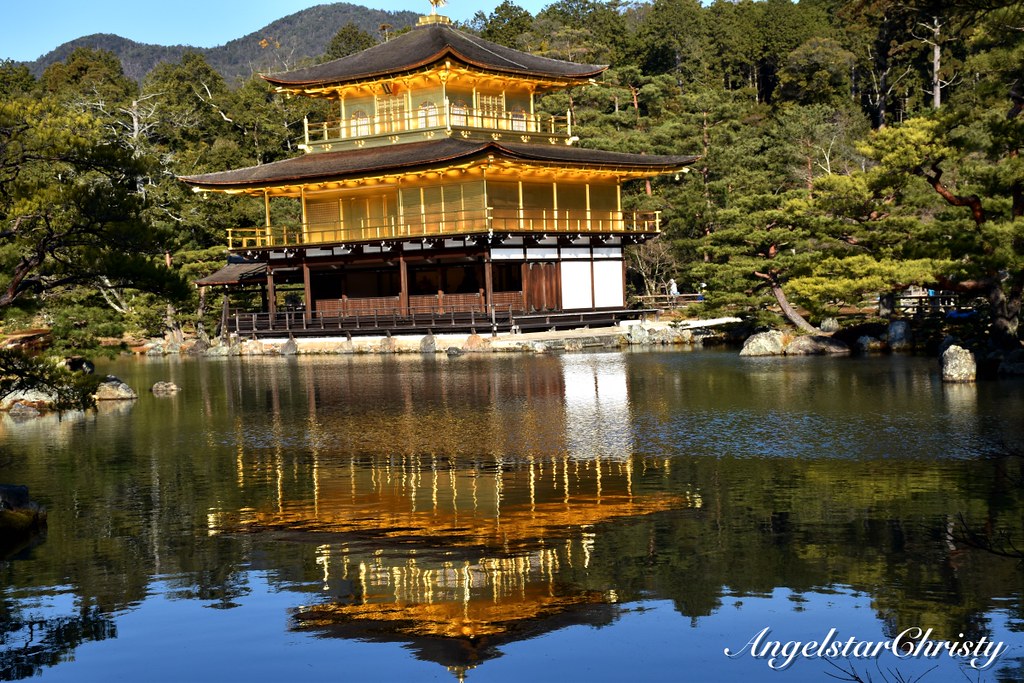
In architecture, it is just like any temple though with that golden exterior it is bound to catch anyone's eye.
Designed in a three-story manner where every floor is modeled with a unique style; the standing pavilion surrounded by the glistening waters of a mirroring pond (Kyokochi) is indeed a glittering sight.
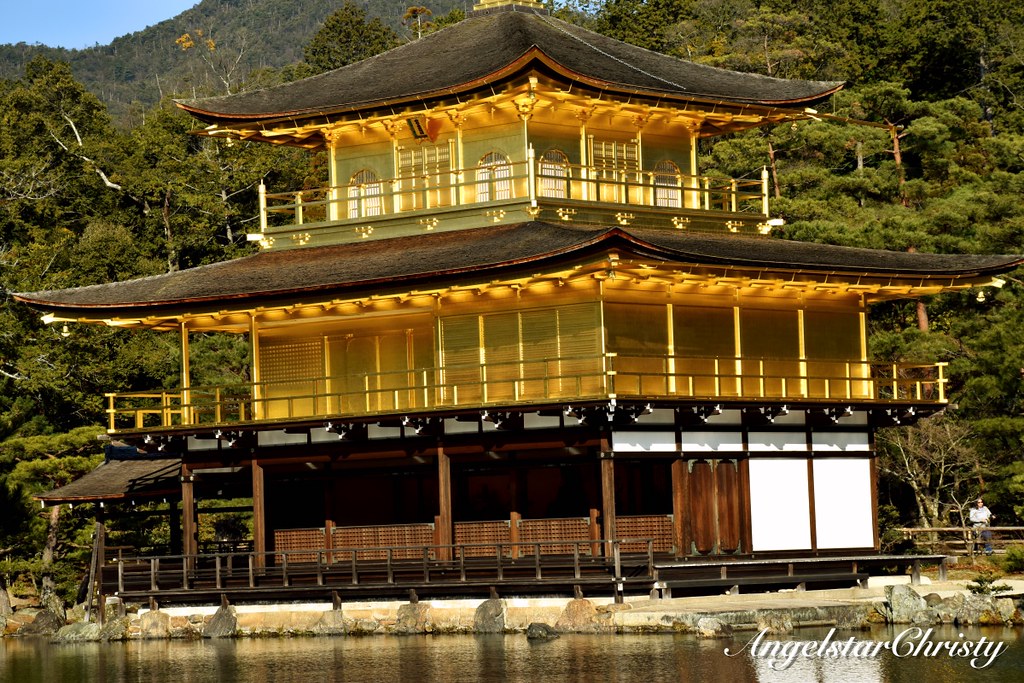
It is the last one standing on its original site; which holds the former villa residential grounds of Saionji Kitsune, a powerful statesman in his time, and it was then known as Kitayama-dai (北山第).
A private residence in origin, it was then converted into a zen temple by the second generation of Shogun Ashikaga Yoshimitsu, who bought the place from Kitsune in 1937 and upon his passing, Yoshimitsu's son set to fulfill his father's wish to make it into a temple.
The temple suffered two major destructive events; where one tore it down and stripped it of its very existence.
The first was during the Onin war which lasted for a decade (1467-1477), and the temple remained to be the surviving complex among everything else on the private grounds.
It was not so fortunate the second time; in what was a deliberate attempt of arson by an apparently mentally ill monk who set fire and further attempted suicide himself.
The temple we see today is a reconstruction from then in 1955; restored to its original state, including the gold leaf-coating on the top two-stories of the pavilion, though the restoration saw a much more lavish and extensive coating of gold than before.
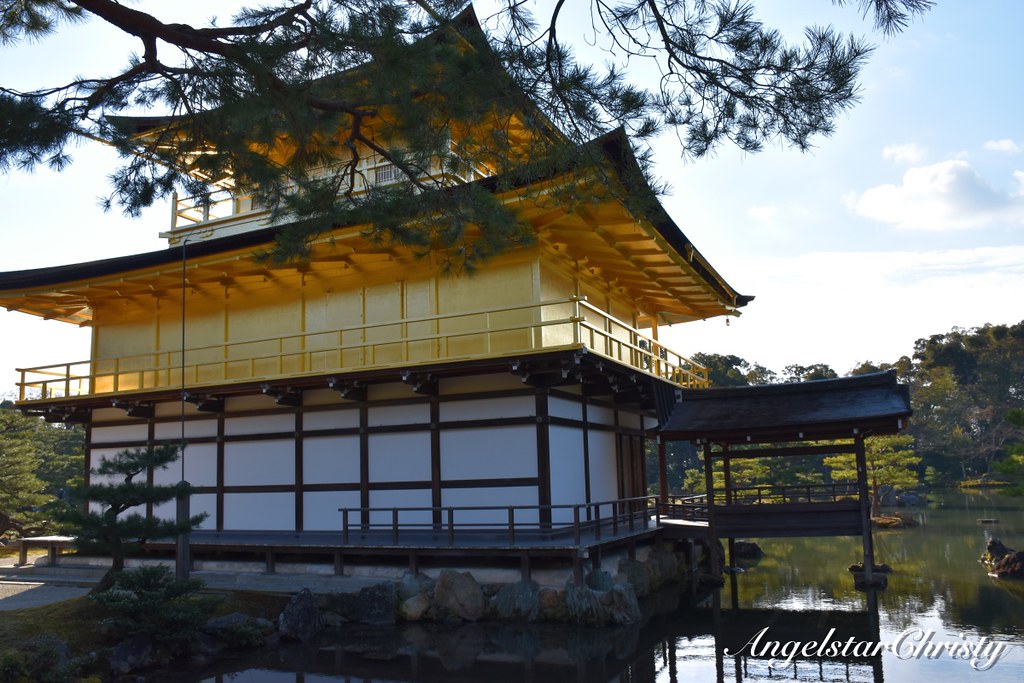
The gold-leaf coating is not the only feature of the pavilion; besides the mirroring pond and its image of elegance but also the distinctive styles of each floor in the three-storey pavilion.
Shinden, Samurai and Zen marks the architecture of the respective floors; the first is The Chamber of Dharma Waters (法水院), an open space residential concept popular among the 11th century Heian Imperial aristocracy, also known as the shinden-zukuri style.
The subsequent second floor is The Tower of Sound Waves (潮音洞), modeled after the warrior nobilities; also known as samurais, in an architectural design known as buke-zukuri.
A Buddha hall resides on this floor along with a shrine dedicated to Kannon, the Goddess of Mercy.
The topmost floor is the Zen floor, also known traditionally as the Chinese chan style or the zenshu-butsuden-zukuri and the entire floor is known as the Cupola of the Ultimate (究竟頂) with the most emphasis on the religious atmosphere; a feature most common during the Muromachi age.

The reflection and glitter is not all there is to this beautiful temple, for beneath the golden facade lies an interweaving concept of nature, death, life and religion in the overall design as it bridges the internal atmospheric devotion within the complex to the outside world.
For instance, the bronze phoenix which adorns the top, the gold-leaf and gold plating of the upper stories, the shape of the temple; which are all providing the picture of what is inside to the outside as it reflects in all its shining glory.
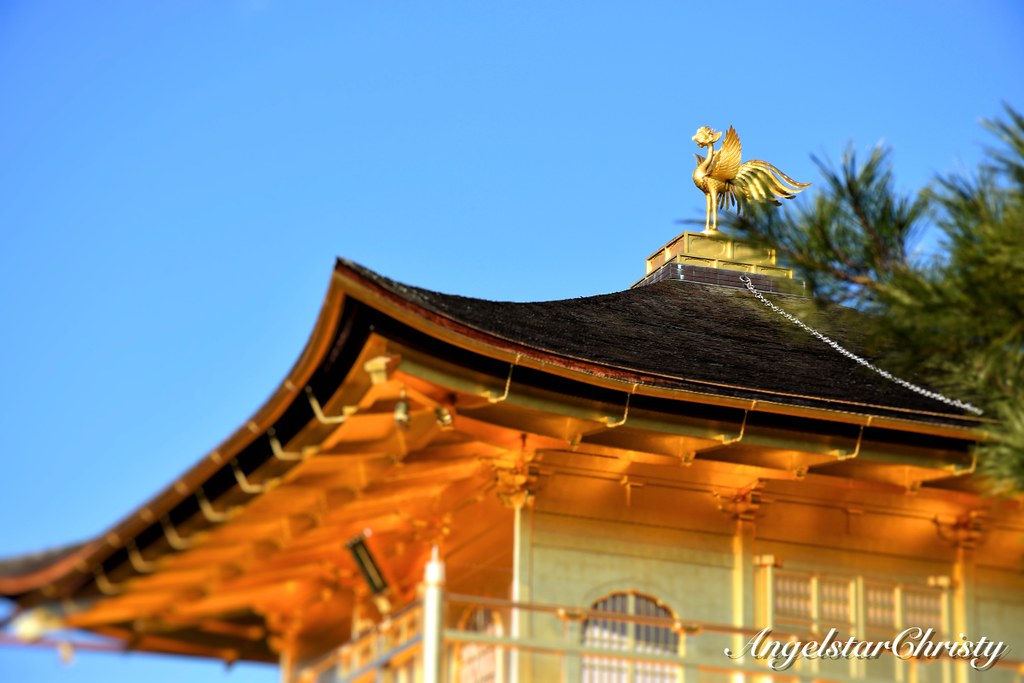
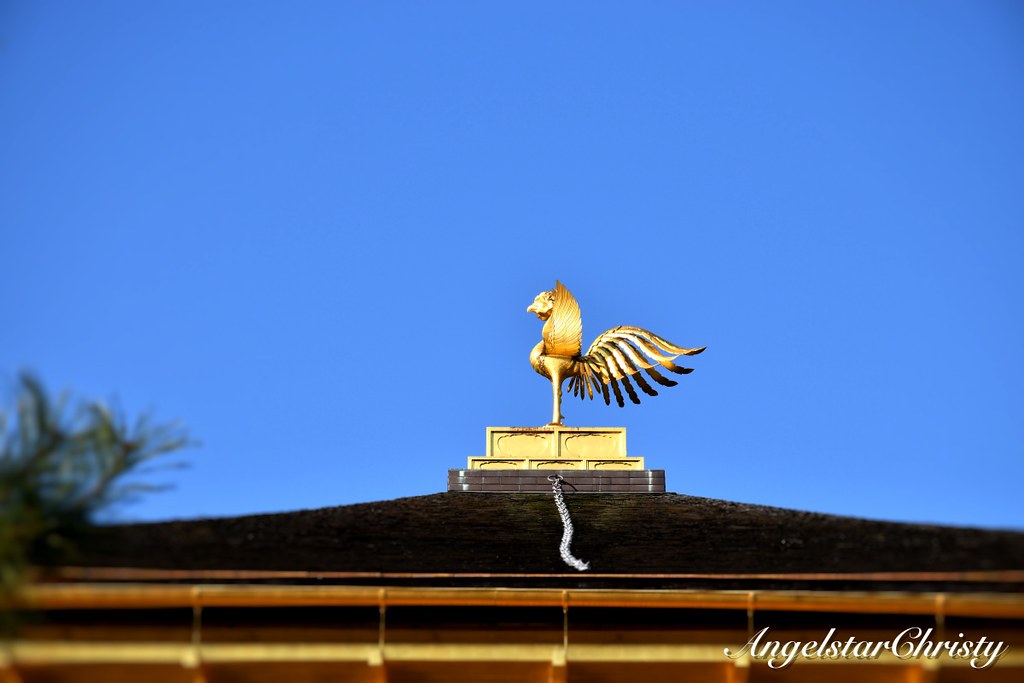
A reflection indeed; as the outside mirrors that of the inside.
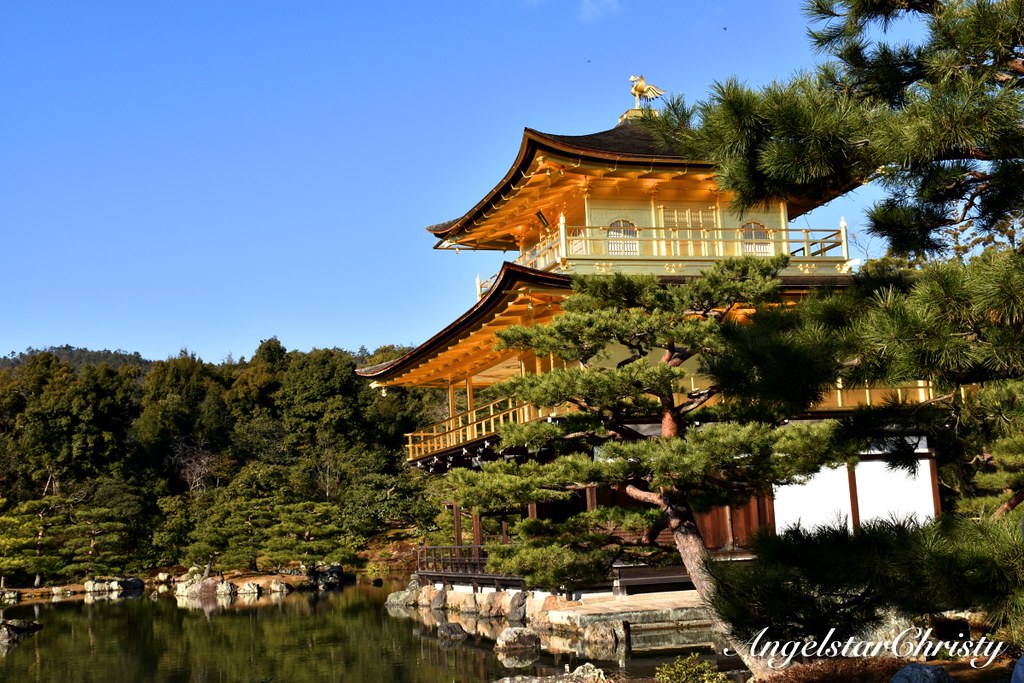
The use of gold is perhaps to echo the visual appeals or a symbol of extravagance as practiced during the Muromachi period, but most of all, it is the purity of the element itself which resonates the true meaning of Kinkaku-ji, and perhaps giving the temple its name as well.
Gold is the symbol of purity; and its use in the temple is to purify and alleviating the negativity thoughts surrounding death.
One may not have thought of all the temple holds; beyond the ravishing golden sight which falls upon the eyes of the beholder, but Kinkaku-ji is truly more than what meets the eye.
It is more than just an iconic sight/site in Kyoto, or the whole of Japan, it is a treasure to behold; as affirmed by its listing as a National Special Historic Site and one of the 17 Historic Monuments of Ancient Kyoto; preserved as a one of the World Heritage Sites.
If you can tear your eyes away from the golden sight, the surrounding gardens which is built in the Muromachi period's garden style is worth a stroll; as it is the very grounds where the shining star stands, known as the Japanese strolling garden (回遊式庭園 kaiyū-shiki-teien), which goes in a go-around style, earning the site the National Special Landscape as well.
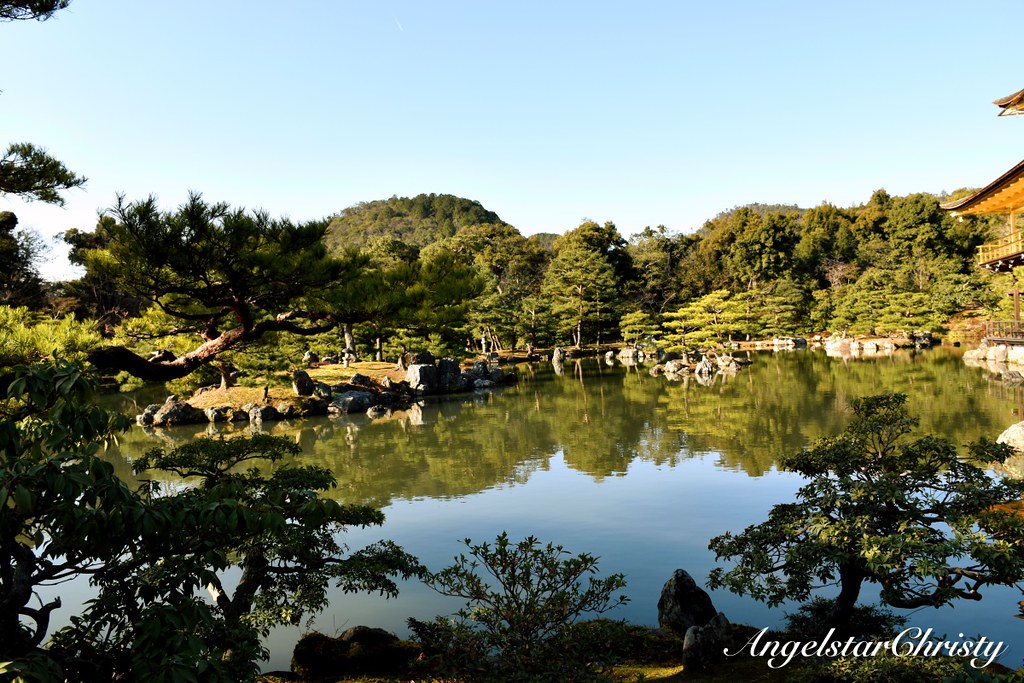
Kinkaku-ji is not to be missed when one is in Kyoto, for it is almost synonymous with the ancient capital itself, that some even say that if you have not been to Kinkaku-ji, you have not been to Kyoto.
Besides, what do you do when in Kyoto if you do not pay tributes to all the beautiful temples the ancient capital is known for? It is indeed the capital of temples and shrines too, if I may say so.
I leave you to decide, while I immerse my eyes and whisk myself back to that golden sight; the shining rays landing on me as the sun shines upon the thatched roof and walls of the zen complex, bouncing off the shadows of its elegance as it stands still in its presence, beaming with pride as it creates its most beautifully known, Golden Reflection.
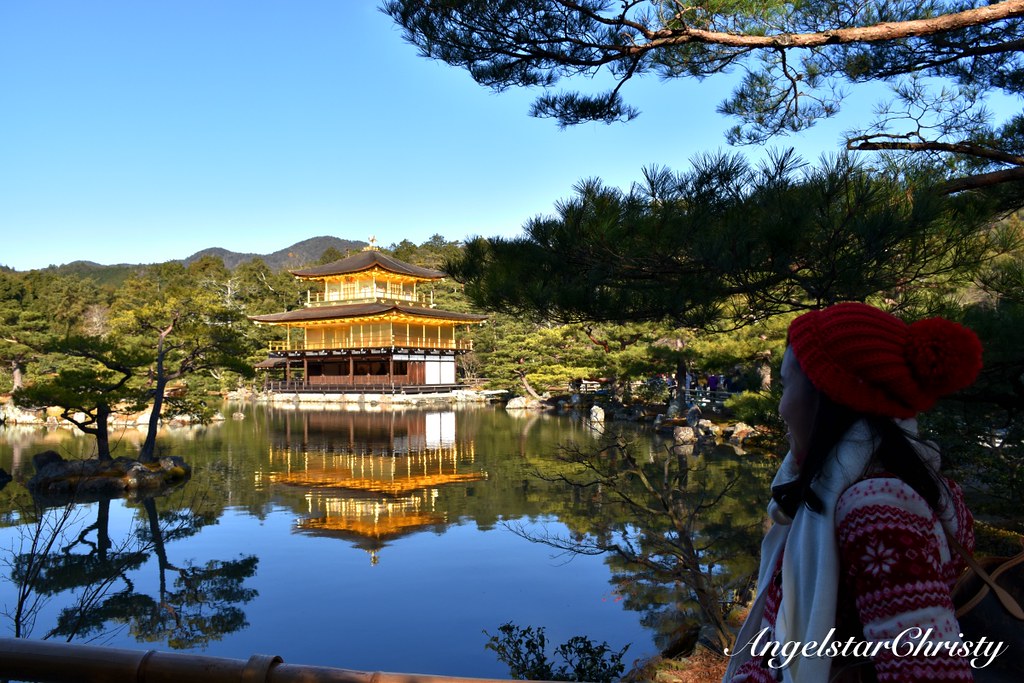

More information:
Address:
1 Kinkakujicho, Kita Ward, Kyoto, Kyoto Prefecture 603-8361, Japan
Opening Hours: Daily 9am-5pm
Admission Fees: ~400 yen (Kindly check again before visiting for rates are subject to change)
How to Get There:
1. By Taxi
2. By City Bus: #205 and #101 (Look at the bus routes and also the sign on the bus, it will state Kinkaku-ji)
You do not have to agree with me.
Art Direction and Photography Styling by Me.
Photos/Videos all belong to me and are copyrighted.
Please kindly ask for permission if you need to use any of my images.
Check out my Pinterest @Angelstarc
Follow me on my live updates on my life, happening on SNAPCHAT @angelstarchrist



0 comments